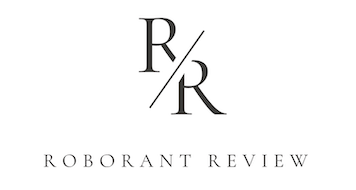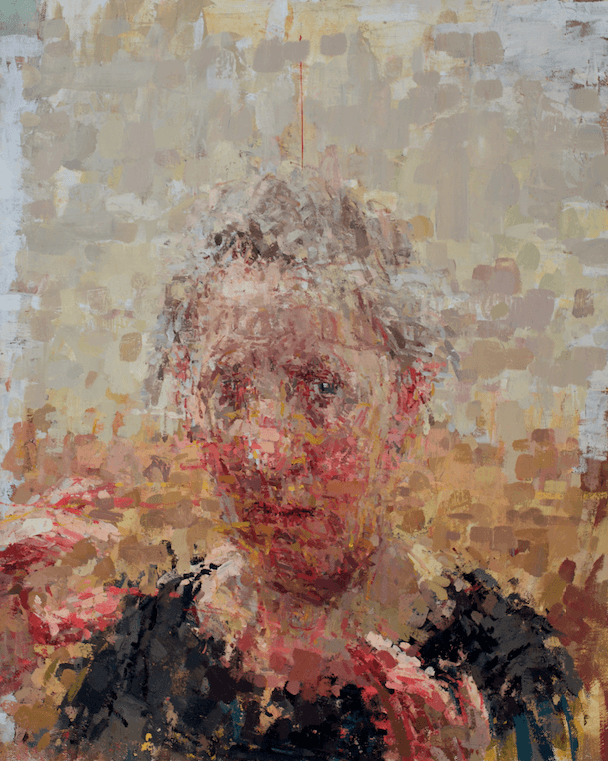Ann Gale, Dolby Chadwick Gallery
This review is part of our “Artist on Artist” series.
Emilio Villalba is a working artist living in San Francisco.
By Emilio Villalba
How do you begin to review your heroes?
I first heard of Ann Gale in 2009 when I was a student of art just learning how to hold a brush, learning who Velázquez and Lucian Freud were in the same moment. I looked up at the art director's wall and saw a postcard of her painting. I asked the director who that was and he said Ann Gale. I now needed to see her work in person, and finally did years later at Dolby Chadwick Gallery.
Gale doesn't need oversized canvases to create presence—there's a rhythm to how the brushwork and color are laid out that pulls your eye through the composition and draws you closer. What is it that I am seeing? From afar, a figure. As you walk closer, the image begins to dissolve into marks and color—at times you lose the subject entirely, left with what feels like pure abstract expressionism.
These are figurative paintings—Ann Gale paints either portraits (busts) or full figures sitting, standing, or lying on a bed. For me, I usually don't bother interpreting subject matter. It tends to be a supporting character for the paint. But in this case the subject and the paint intertwine conceptually and visually on canvas. There's a method to the madness. Vertical and horizontal thrusts or coincidences throughout the compositions. Grid-like structures that get lost the closer you get to the paintings. Edges that are lost but found when you step back away. These paintings are impressions, but painted with intensive labor and focus—the kind of time and attention you'd see in academic painting, but arriving at something entirely different.
When in front of Robert Lying Down, the first thing I noticed was this intense warmth—orange—on the figure's knees. It felt like there was a crack in the studio wall where the sunset's light was creeping through and casting onto the figure. But what it really did after time was make me appreciate Gale's use of cool tones. The flesh tones leading from the warm knees are gradations littered with variations of cool notes. Beautifully arranged and loosely applied. It's hard not to think of abstract expressionism when you are inches away from this painting. These close-up details seem to be in dialogue with painters like Joan Mitchell and Philip Guston's abstract work.
Moving up the torso in Robert Lying Down and arriving at the hands and portrait, these tones that would normally be the focus of color and warmth in an alternate Gale painting, now feel cool. How can red feel cold, especially against green which in this case feels warm? The subtle and soft-spoken play of contrast here is elegant. The larger green and blue grays in the background support the reds and pinks and smaller intricate strokes. These elements force you to step back to take it all in, only to pull you back in to discover a new world of detail—a never ending universe. The whole, then the parts.
I also want to point out the illusion of edges and form here. The hand from afar feels like a hand, and when you walk up to it it's just a mess of strokes. There is no hand at all, or at least no fingers. They are there but not really. I know this is like stoner art talk but Gale does this like no other. She's not trying to illustrate a hand with five fingers—she's painting the presence of it, the light and atmosphere, the impression. It's about perception, not illustration. There are other figurative painters that come to mind who work this way—Antonio López García, Euan Uglow —artists who paint the figure from life where process is visible, where you can see the searching and decision-making in every mark. But Ann Gale is Ann Gale.
Portrait in Gold Shadow (2025). Seeing this painting from afar you can't help but notice how the portrait is emerging from or fading into the background. Like so many of Gale's paintings, the theme of the show is her paint. The hands in this piece are worth examining—floating in the foreground, posed like a magician's hands just before an illusion.
The hands took me a moment to notice—at first they felt abstract, unreadable. But stepping back, you see one hand in the foreground delicately posed vertically, the ring finger slightly lower than the rest, almost Sargent-like. There's a trompe-l'oeil quality to it, reminiscent of Frans Hals' Young Man Holding a Skull, where the hand reaches out toward the viewer. Gale creates this effect through the balance of warm and cool—the desaturated colors on the shadow side of the hand recede, while the warmer fingertips catching light pop forward. These hands are impressions, silhouetted and woven into the painting so subtly they almost disappear—not literal, but felt.
These new paintings feel brighter, more atmospheric than her previous exhibition at Dolby Chadwick. There's more air in them, the space feels more open—as if the environment extends beyond what we see. The values are higher in key. There's bolder saturation, especially in the warmer tones—yellows, oranges, reds acting as focal points more prominently than before.
How simple the idea of painter and model seems but how bold it is to pursue. She has put in decades of work and practice into this lifestyle and we are reaping the benefits—beautifully crafted and studied inspections and investigations of her subjects. These are her documents of her days. Visual notations on canvas. She's not repeating herself. After decades of painter and model, she's still finding new territory—new games to play, new questions to ask.
In a moment obsessed with speed and instant gratification, where our attention spans seem to have evaporated, Gale's work demands the opposite. These are paintings that take months, even years, countless sessions with a model, and require us to stand there and look. There's a quiet radicalism in that commitment to slowness, to the handmade, to accumulation over time.
It is very refreshing to see her work especially in a time where we are inundated with commercial and pop art flooding the art world and social media. At the opening reception, the turnout was incredible and felt electric. People looking at the work in awe, asking questions: are these painted from life? How long do they take? Who are these models? Is the artist here tonight?
That's the thing about Ann Gale's work—at least for me. It creates mystery. It makes me ask questions. It pulls me in for a closer look and inspires me to paint.
Ann Gale, October 2–November 1, 2025, Dolby Chadwick Gallery, San Francisco







